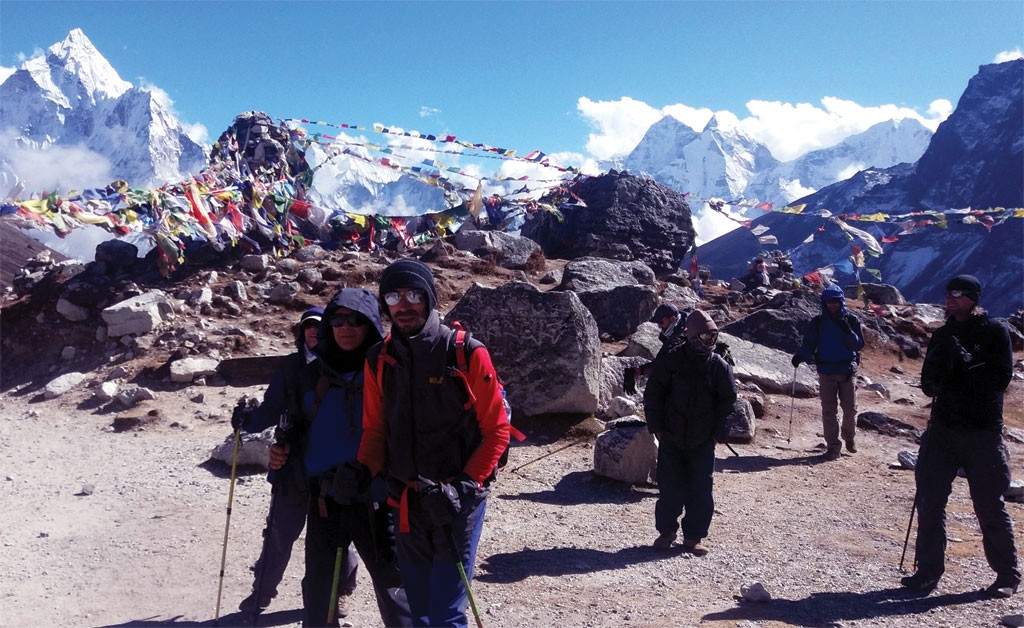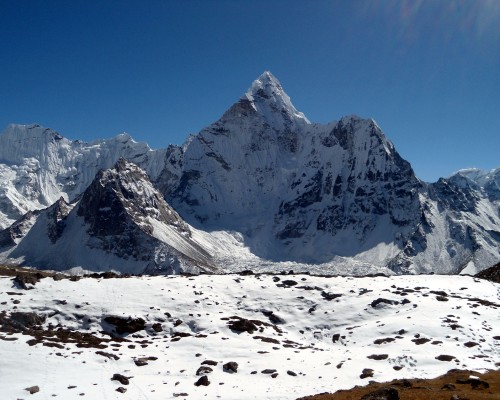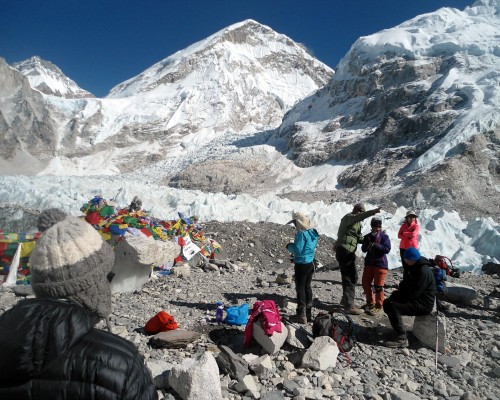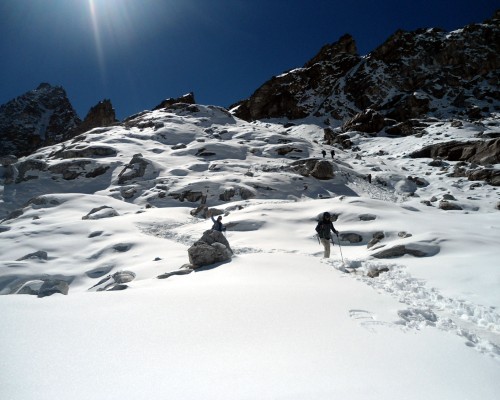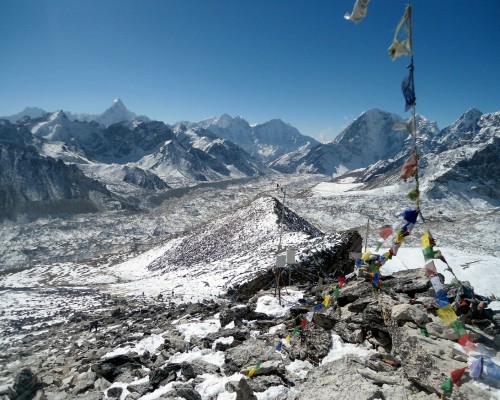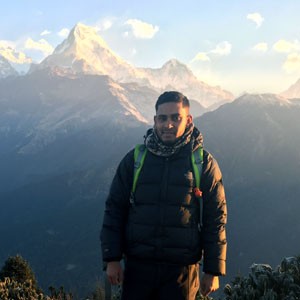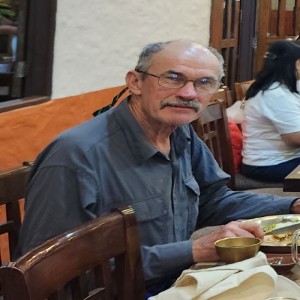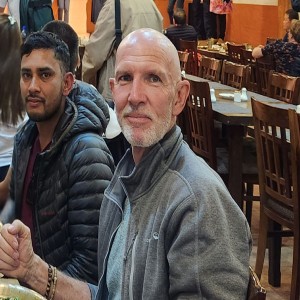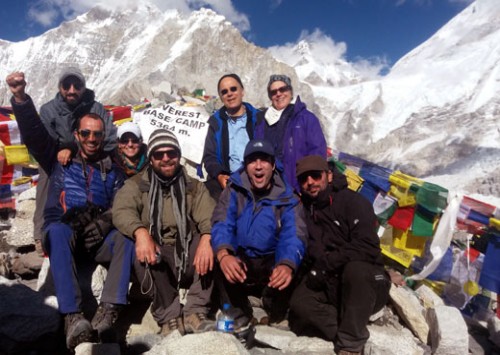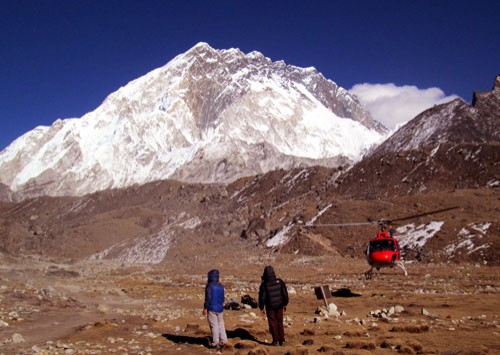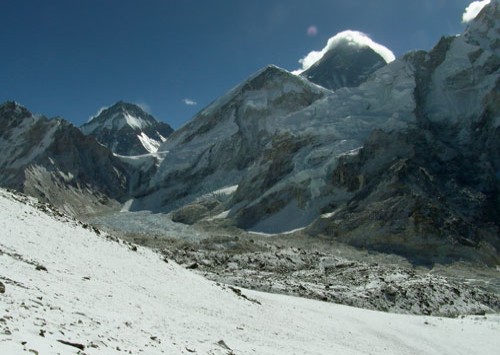The Everest three pass trek is the longest in the Khumbu region. It is also the most challenging trek in this region, even more difficult than the famous Everest Base Camp and Gokyo Lakes treks. Starting the trek from the Dudh Koshi valley, the trail ascends to Imja Khola Valley, explores EBC, enters Gokyo Valley, and returns to Dudh Koshi valley.
While trekking through these different valleys, you will witness incredible mountain views, pass by diverse climatic zones, spend nights in picturesque Sherpa villages, and meet some great people along the way. By following our Everest three pass trek itinerary, you will be exploring numerous places and get plenty of time to rest, recover, and acclimatize on the way.
On the Everest three pass trek, you will get to experience the most thrilling flights of your life. The landing and take-off from the Lukla airport will leave you in amazement. The trekking route is serene and soothing. The trail winds through lush rhododendron forests, passing by remote villages and crossing the Dudh Koshi river numerous times.
Join us on the ultimate adventure in the Everest region in 2025 by doing the 3 passes trek. It is a 17 days long journey amidst towering mountains and beautiful valleys. Discover the Lukla airport, Namche Bazaar, Everest Base Camp, Gokyo Lakes, and the three high passes. And explore the hidden corners such as Hotel Everest View, Nagarjuna Hill, Kala Patthar, and Gokyo Ri during your acclimatization hikes.
Highlights to Look Forward to
- A perfect trekking package for travelers looking to do something exhilarating, adventurous, and challenging in the Himalayas
- Witness breathtaking mountain views on this trek and come across a wide range of landscapes.
- Trek through dense forests, uneven cliff sides, and remote villages ascend to 5,000 meters above the mountain passes
- Trek via various glacier moraines and alpine lakes, including the biggest glacier in Nepal, Ngozumpa Glacier, and explore stunning Gokyo lakes
- Reach the Everest Base Camp, Kala Patthar, and Gokyo Ri
- Get to experience the mountain lifestyle and learn about the culture and beliefs of Sherpas and other communities
- Visit some of the oldest and biggest monasteries of the Khumbu region, dating back hundreds of centuries
- Test your endurance while crossing three high mountain passes above 5,000 meters under the guidance of our expert mountain guide
What should you expect during the 3 passes trek?
If you have heard about Sherpas, then this trek will provide you with a close look at their life and beliefs. You will get to have intimate interactions and learn all about them and other mountain communities. Then comes the stupas, monasteries, prayer wheels, and colorful prayer flags spread all around the trail. You will visit the ancient Tengboche, Pangboche, and Thame monasteries during the 3 passes trek. Some monasteries also house the skull and hand bones of Yeti.
During your long time in the mountains, you will disconnect from the digital world, challenge your body and mind every day, and as a result, reconnect with your heart and purpose. We believe long treks like this are more than just an adventure. The trekker gets better physically, mentally, and emotionally by the end of the journey.
The upper part of the trail involves trekking via glacier moraines, steep-rugged tracks, and loose boulder fields. The air is thin and cold. Likewise, the exposure to sun, wind, and dust is also high, so wrap your neck and mouth with a scarf, and do not forget to apply sunscreens and moisturizer.
The landscapes you will witness on the Everest three passes trek are jaw-dropping. If you love mountains, then this trek is like a dream come true. You will get to see some of the unreal mountain views that include Everest, Lhotse, Nuptse, Ama Dablam, Thamserku, Cho Oyu, Makalu, Baruntse, etc.
Everest three pass trek route summary
The Everest three pass trek begins with a thrilling flight to Lukla. You will start walking from Lukla. Spend the first few days in famous villages like Phakding, Namche Bazaar, Pangboche, and Dingboche. In between these villages, you will take three acclimatization breaks and hike to the Hotel Everest View and Nagarjuna Hill.
From Dingboche, follow a less crowded, offbeat route to Kongma La pass. The trail descends to Lobuche village and continues to Kala Patthar and Everest Base Camp via Gorak Shep. After these hikes, you will descend to Dzongla and cross Cho La pass. From Cho La pass, the trail drops to Thangnak and continues to Gokyo village via Ngozumpa Glacier.
Spend the last rest day in Gokyo village and hike to Gokyo Ri. The trail then leads you to the top of Renjo La pass and descends Lungden. Further, you will trek past less visited villages called Marlung and Thame and walk back to Lukla via Namche Bazaar. Lastly, a short flight will take you back to Kathmandu.
Who can do the Everest three pass trek in Nepal?
The Everest three pass trek 17 days is recommended to experienced trekkers with strong fitness and endurance. If you are looking for a long, adventurous journey in the Himalayas of Nepal, then we highly suggest this package. You have to be physically and mentally fit to do this trek.
If you are a beginner trekker, we recommend starting with moderate treks like Everest Panorama and Pikey Peak. These trek routes are great for introducing yourself to the Himalayan trail. And once you get the grasp, you can move with tougher trek routes like Gokyo Valley with Everest Base Camp trek, Gokyo Valley trek with Renjo La pass, and eventually Everest three pass.
Tips for Everest three pass trek Nepal
- Get proper trekking equipment, which is most important and only ascend under 500 meters every day to make your trekking safe and fun. It will help you avoid altitude sickness during the trek and make walking much more comfortable.
- As the 3 passes trek is a long trek, we highly recommend getting a solar charger for the journey. You can easily buy it online.
- Buy enough protein bars and snacks in Kathmandu for the trip. Prices are higher along the Everest trail.
- Do not hesitate to eat during the trek. Have ample food and choose nutritious options. The journey requires a lot of strength.
- Have Nepali cash on you during the trek. You can buy additional services that are not covered in our package cost, like hot showers, charging, WiFi, beverages, etc.
- Get a Nepali tourist SIM with data for better internet use.
- You may share the trails with yaks and mules. While crossing them, always be on the cliffside.
- Make sure to inquire about meat freshness before ordering any non-veg dish, especially if you are above Dingboche village.
